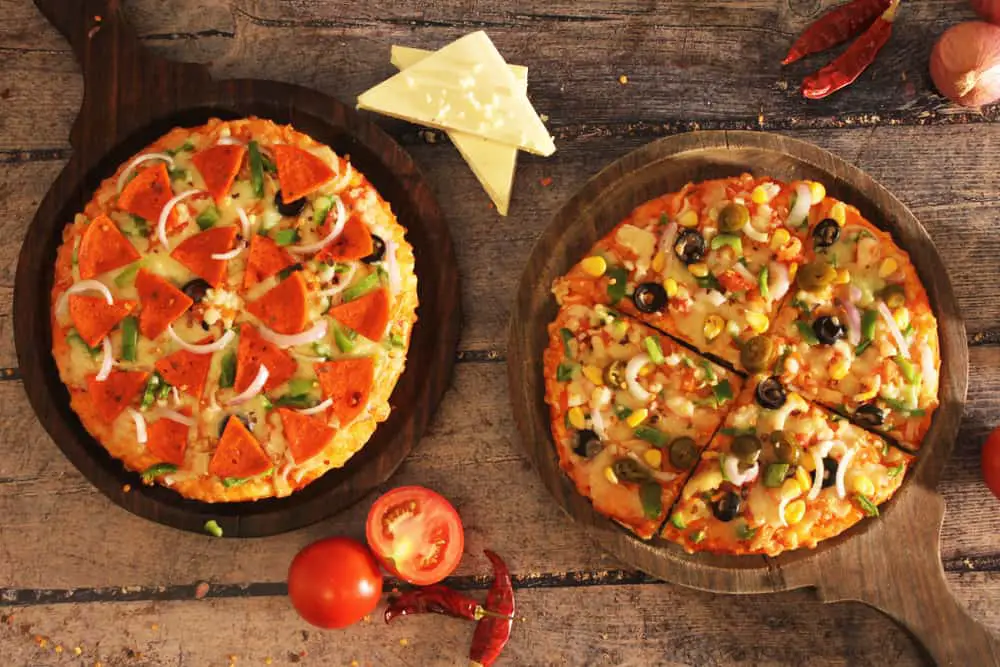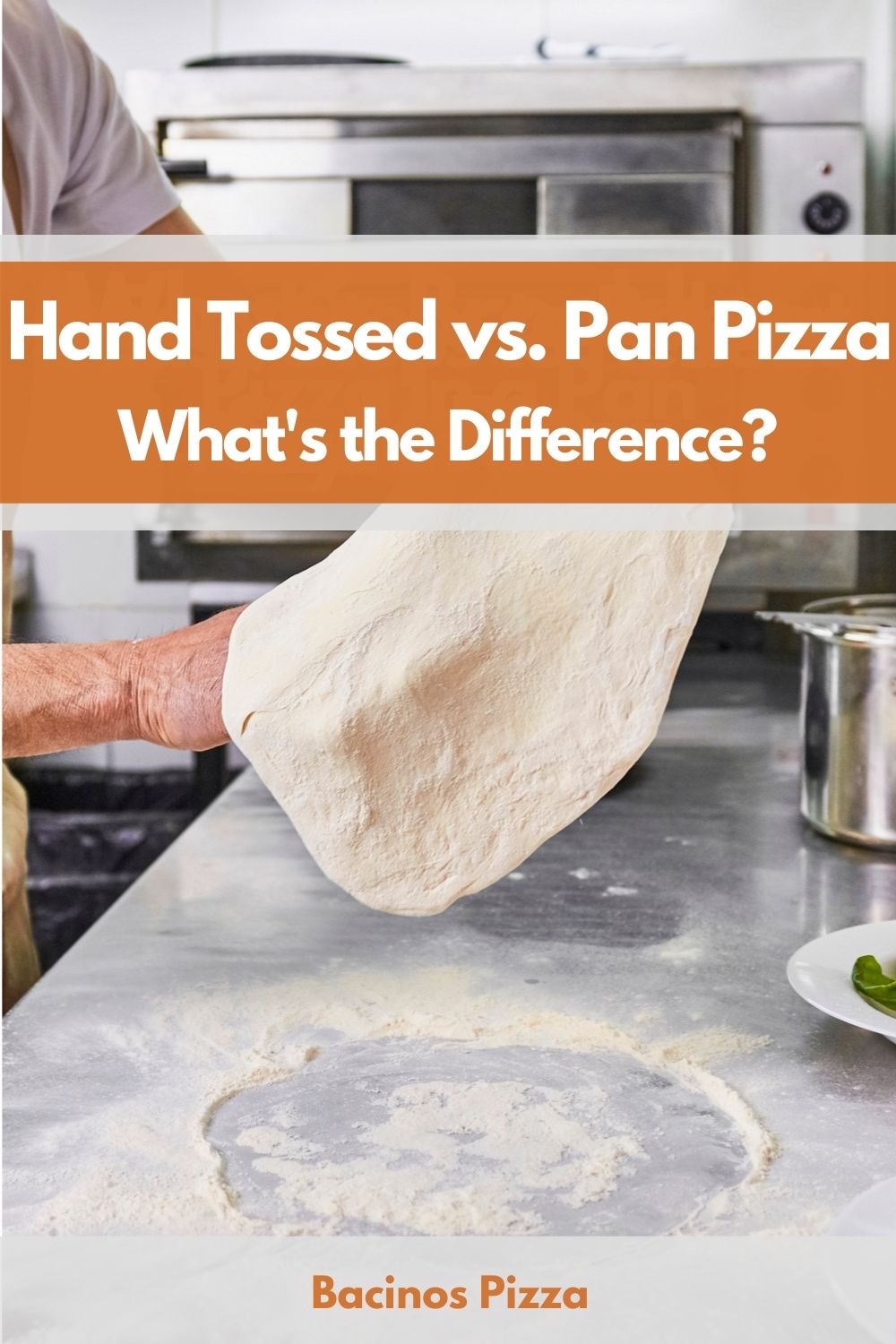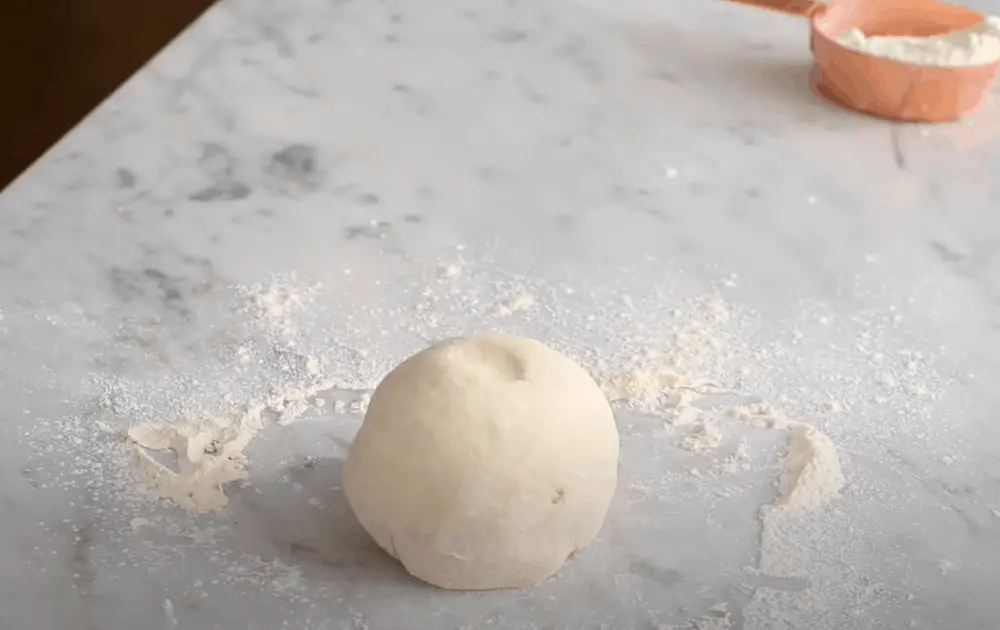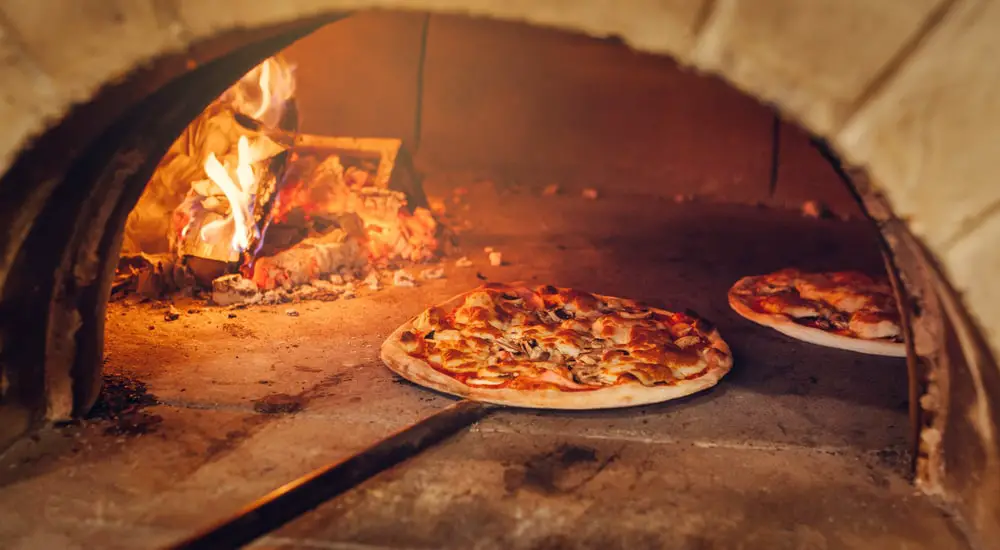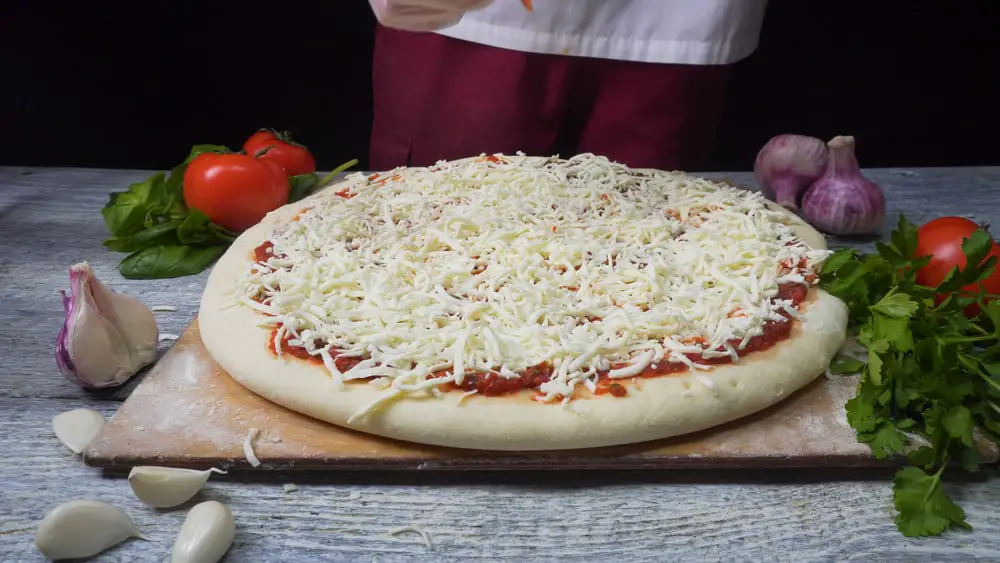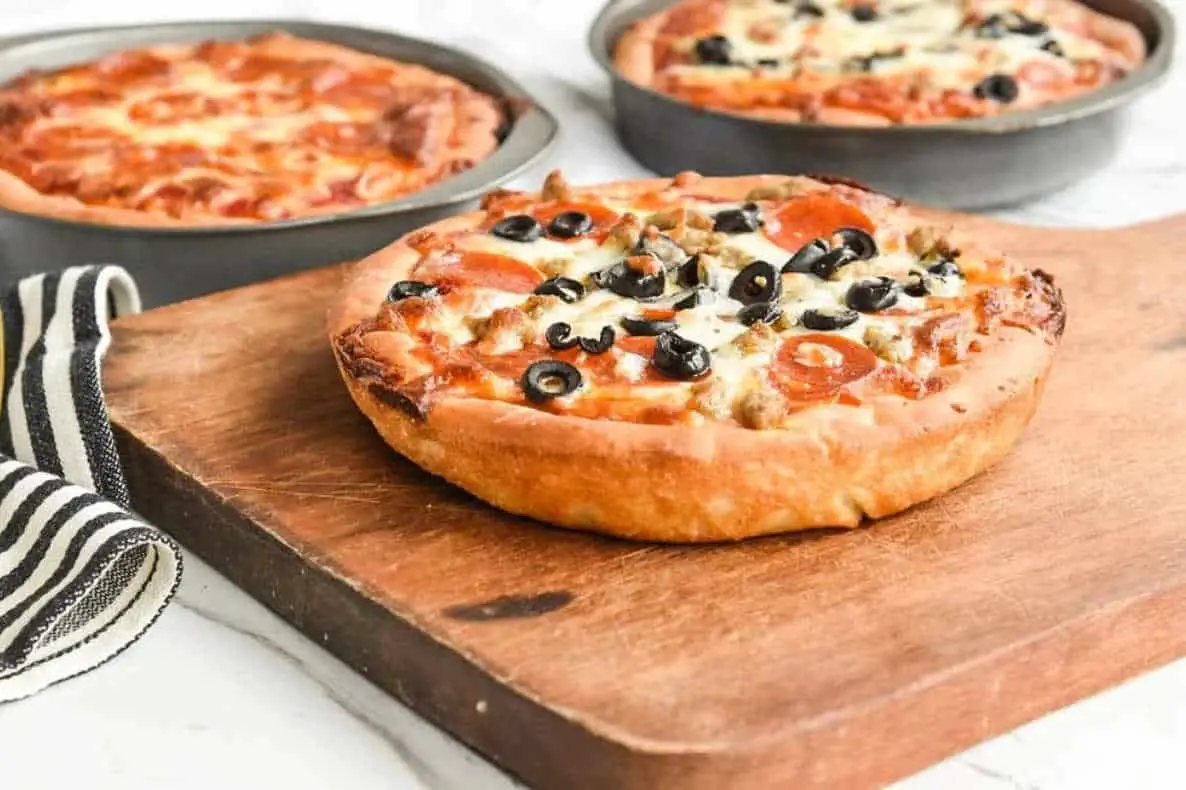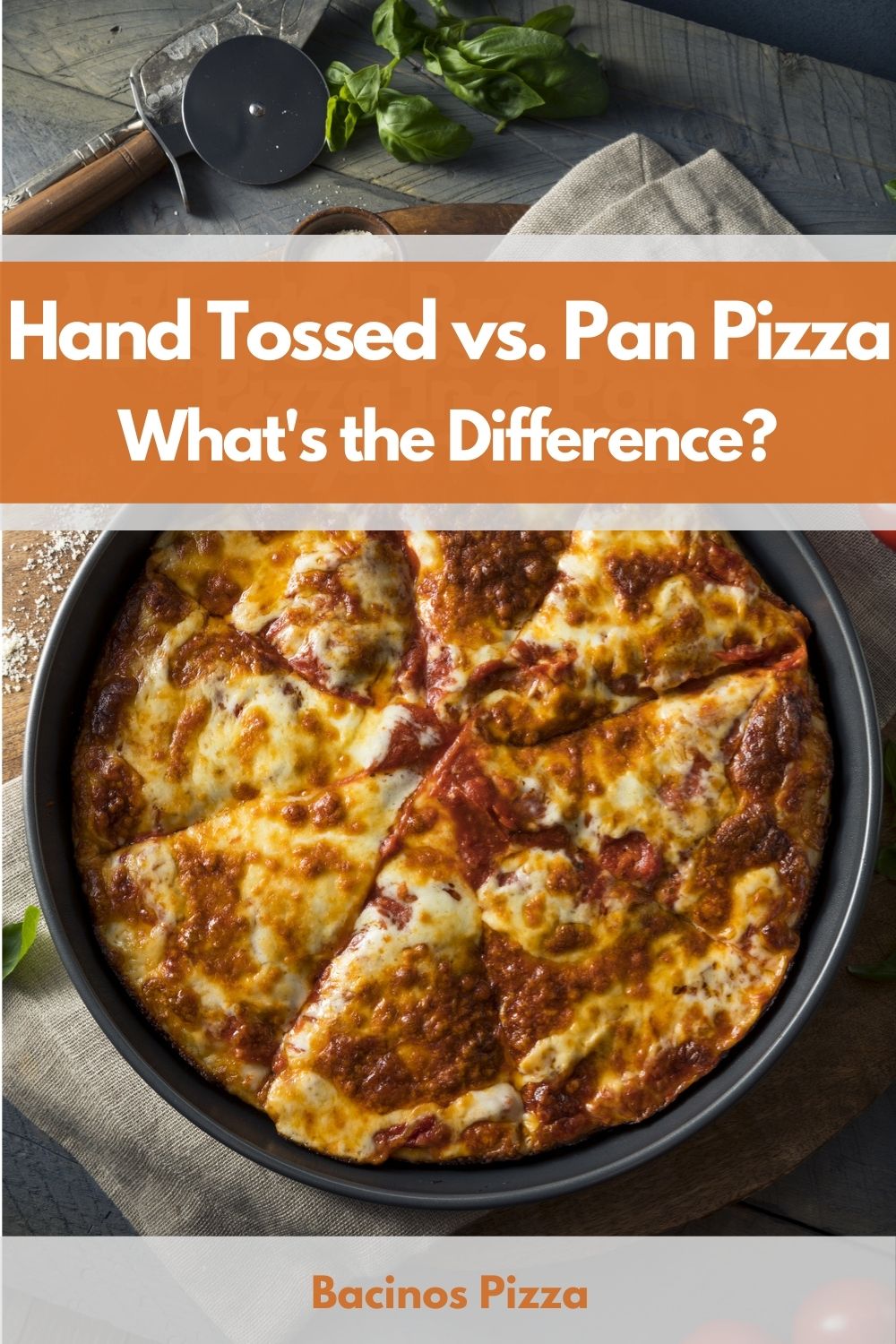You might want to order and try out many types of pizza crusts. And they’re usually a far cry from each other when the topic is flavor. So, how does hand-tossed pizza stack up against pan pizza?
In summary, the hand-tossed pizza has a thinner and flatter crust. But the pan pizza has a fluffier and thicker crust, usually one inch deep or more. The pan pizza crust also appears more golden brown and fried because you spritz some oil on the bottom of the pan before baking.
In this article, I’ll explore all the main differences between hand-tossed pizza and pan pizza. Continue reading if you’re interested to learn more about hand-tossed vs. pan pizza.
Differences Between Hand-Tossed And Pan Pizza
Though these two may seem alike, they have distinguished differences based on six dimensions. Keep track as I dissect each layer, from the dough to the texture and flavor.
1. The Dough
The dough ingredients for both types of pizza are more or less the same. They typically include flour, granulated yeast, salt, warm water, and olive oil.
However, hand-tossed pizza uses softer and thinner dough. This is due to the process of tossing the dough in the air, which helps to evenly stretch it and create a uniform thickness before baking.
You’ll want to make sure the dough is just soft enough. But so, don’t overdo it to avoid breaking when tossed in the air. The hand-tossed pizza dough often rises and spreads on the pan.
As for the pan pizza, the dough is a tad thicker and stiffer. Since there is little or no room to expand on the pan, it results in a fluffier pizza.
Pan pizza dough does grow both in width and height during baking due to the yeast activity. As a result, the pizza turns out spongy and full of bubbles when cooked.
Ideally, the pan pizza dough doesn’t rise and spread on the pan like the hand-tossed pizza dough does. And that’s how the hand-pizza dough differs from the pan-pizza dough.
2. The Preparation
Hand-tossed pizza also differs from pan pizza as far as preparation techniques go. To make hand-tossed pizza, knead the dough until it’s soft. Then, toss it repeatedly in the air to find the right shape.
Here’s a video that illustrates how to make hand-tossed pizza at home:
Ideally, you hold the dough with the back of your fist to avoid tearing it up. Once you get the correct dough size and thickness, continue by rolling it onto a burning-hot pizza stone or steel. And cook it in an oven at around 500 °F (260 °C) for 10–15 minutes.
It would be best to have a pizza peel to transfer the pizza on and off the oven. But if there’s no peel within easy reach, you can use parchment paper instead.
Know that it takes practice to master the art of hand-tossing the dough. So, it’ll probably take some time before you produce a crust that can hold the toppings without crumbling down.
It’s relatively easier to make a pan pizza than a hand-tossed one. You first need to oil the dough and shape it like a ball.
Then, use your fingertips to gently press and spread the dough into the bottom of a heavy-duty cake pan or cast-iron skillet. This technique helps you achieve the desired shape.
You can watch this video to learn how to make a pan pizza with browned base and crispy rim:
Make sure you coat the pan with a tablespoon of oil before baking. It will not only prevent the dough from sticking onto the pan but also helps you get a crispier crust.
The pan pizza bakes in an oven at temperatures above 500˚F (260˚C) for 25-35 minutes. And because no tossing is involved here, you don’t require any utmost skill to make a pan pizza.
3. The Crust
There is a significant difference between the hand-tossed and pan pizza regarding the crust. The hand-tossed pizza has a flatter and thinner crust with little cheese.
Usually, the tossing action causes the air bubbles to burst in the dough. Accordingly, the dough won’t rise in the oven, resulting in a thin- or medium-sized crust.
And I’d like to reiterate that tossing the dough in the air requires practice, so you may not get it right the first time. Here’s a video illustrating how to hurl the dough in the air:
Note that while hand-tossed pizza may use less oil than pan pizza, it’s not completely oil-free. Olive oil is often used in the dough and may be brushed onto the crust before baking. As a result, the crust may appear less greasy than a pan pizza, taking on a drier, more blistered appearance.
The pan pizza crust, a.k.a. the deep-dish pizza crust, is thicker and fluffier with more cheese. This is because the dough has little to no room to expand, so it only grows in width but not in height.
When preparing the pan pizza, you’ll be obliged to apply a thin layer of oil at the bottom of the pan. Therefore, the resulting crust will be perfectly fried and browned. It will also have an oily look due to the dough oiling and the pan coating.
In general, though, the hand-tossed pizza and pan pizza are crispy. Hence, whether you go for the former or the latter—you get that delightful crunchiness you crave.
Practically, you might want to order a hand-tossed pizza if you prefer the classics more. On the contrary, a pan pizza is excellent if you like to try something that tastes like fried bread.
4. The Topping Ingredients
Both types of pizza may include the same ingredients for the toppings. However, the traditional hand-tossed (Neapolitan) pizza has a thinner crust.
As such, it supports fewer toppings and uses less cheese and sauce. The popular toppings for hand-tossed pizza may comprise fresh mozzarella, tomatoes, basil leaves, veggies, olive oil, and oregano.
You can apply your creativity here and add different toppings as you wish. Things like pineapple, seasonings, and spices can come in handy. The hand-tossed pizza is designed to be eaten with hands.
The pan pizza can handle much more toppings due to its thicker crust. In most cases, the thick crust features a five-cheese blend of mozzarella, white cheddar, fontina, asiago, and provolone.
You can also get creative and add your combinations of toppings depending on how you want your pizza to taste.
For example, I’ve seen many pizza lovers complement their crust with classic pepperoni and vegetables.
You might also want to sprinkle some green paper and Parmesan cheese over the tomato sauce to accentuate the taste. Because the pan pizza is thick, you’ll want to eat it with a knife and fork.
Notably, the pan pizza uses more cheese on the toppings than the hand-tossed pizza. With that said, it tends to look buttery and soft – not dry.
It is perfect for those who love cheese but hates the flavorless crust. All in all, both pizza types have their toppings evenly distributed.
5. The Taste And Texture
As I said earlier, both types of pizzas have a crispy taste. Nevertheless, the hand-tossed pizza’s crust has a drier and blistered texture. It also has a distinct edge with little or no toppings.
More often than not, hand-tossed pizzas don’t come with any extravagant toppings. Also, they’re typically less greasy than their pan-pizza counterparts.
Hand-tossed pizzas are the better choice for pizza enthusiasts who dislike too much oil. Because of how dry they are, they feel crunchy to the bite.
As for the pan pizza, this one has a bread-like fluffy texture. Its thick, bready crust can be 1 inch deep or so.
And, because you spritz some oil at the bottom of the pan to bake, the pizza will have a fried and golden brown crust. The edges of the crust will also look different from those of the hand-tossed pizza.
Thanks to the pan pizza’s thicker and sturdier crust, it’s easy to stuff more cheese, sauce, and toppings. These adornments will typically spread to the edges of the crust.
Given that the pan pizza comes stuffed with more cheese, the crust tends to have a softer texture. This—coupled with the pie’s perfect golden-brown crust—gives the pizza a wonderful blend of crispiness and juiciness.
6. Calorie Count
Aside from the five defining characteristics mentioned, nutritional value is another factor many are curious about. Does pan pizza have a higher calorie count? Do I get lower fat content with a hand-tossed crust?
Generally, you can expect to get more calories from a thicker crust. But let’s also consider the pizza toppings to give you a clearer view. And, to be fair, we’re comparing those from different pizza chains. That way, you know the nutritional value when you visit the said pizzeria.
| Pizza Chain | Pizza Type | Calories per slice |
|
Pizza Hut |
12” Hand-Tossed Pepperoni Pizza | 269 cal |
| 12” Pepperoni Pan Crust Pizza | 286 cal | |
| 12” Cheese Hand-Tossed Pizza | 260 cal | |
| 12” Cheese Pan Crust Pizza | 280 cal | |
|
Domino’s |
12” Pepperoni, Hand-Tossed Crust | 200 cal |
| 12” Pepperoni, Pan Crust | 308 cal | |
| 12” Cheese, Hand-Tossed Crust | 250 cal | |
| 12” Cheese, Pan Crust | 290 cal | |
|
Papa John’s |
12” Pepperoni Original Crust | 230 cal |
| 12” Pepperoni Pan Crust | 410 cal | |
| 12” Cheese Original Crust | 210 cal | |
| 12” Cheese Pan Crust | 290 cal |
When it comes to hand-tossed pizza, Domino’s offers the lowest calorie count on pepperoni and cheese toppings. But Pizza Hut was able to redeem itself in terms of pan-crust pizza. So does this mean it is better to munch on the former’s pan crust?
The answer: That depends on your target calorie for the day. If you have got a slice, that won’t be troublesome. But if you get two or more and it’s almost the end of the day, you might want to rethink your choices.
Tabular Representation For Hand Tossed Vs. Pan Pizza
| Comparison Parameters | Hand Tossed Pizza | Pan Pizza |
| The dough | Soft and slender dough | Stiff and thick dough |
| The preparation | The dough is kneaded and tossed in the air before baking at 500°F | The dough is oiled and shaped into a ball before baking at more than 500°F |
| The crust | Thin and flat crust with little cheese and toppings | Thick and fluffy crust with more cheese and toppings |
| The toppings | Fresh mozzarella, tomatoes, basil leaves, veggies, olive oil, and oregano. | A five-cheese blend of mozzarella, white cheddar, fontina, asiago, and provolone. |
| The taste and texture | Dry texture with a crispy taste | Soft texture with a crispy taste |
| Calorie Count | Lower | Higher |
Frequently Asked Questions
1. Which One Is Healthier Between Hand-Tossed And Pan Pizza?
On the one hand, the thicker pan pizza crust contains meatier toppings. Therefore, it’s loaded with much more calories than its hand-tossed counterpart and is better suited for folks who lead a more active lifestyle.
On the other hand, the hand-tossed pizza’s thinner crust can handle a few toppings. As a result, it’s the definitive version for people who don’t exercise a lot. If you’re on a diet, you better opt for hand-tossed variants.
2. Which Are The Common Forms Of Hand-Tossed And Pan Pizzas?
The hand-tossed pizza family includes two famous forms of pizza—thin crust and wood-fired. They’re both baked in the wood-burning oven under blazing heat. The New York-style pizza is another type of hand-tossed pizza, though its crust is thicker than the Neapolitan’s.
The pan pizza family consists of several pizza varieties. These include Detroit-style pizza, Chicago deep-dish pizza, and East Coast Sicilian pizza. These pizza variations come with many toppings, including cheese, sauce, meat, veggies, etc.
Bottom Line
There’s no right or wrong concerning hand-tossed vs. pan pizza. It all depends on your unique taste and preferences. The hand-tossed pizza will be your perfect delicacy if you want a thin pie with less oil and fewer toppings.
Alternatively, the pan pizza will give you a pleasant experience if you prefer a thick slice with plenty of cheese and toppings. Remember, both options are almost identical when it comes to crunchiness.

Julie has five years of experience in the restaurant industry, she decided to share her knowledge about her liking and fondness for food and pizza, of course, cooking as her love language. She’s very passionate about what she’s doing, making all the things she writes regarding pizza recipes, very amazing!
